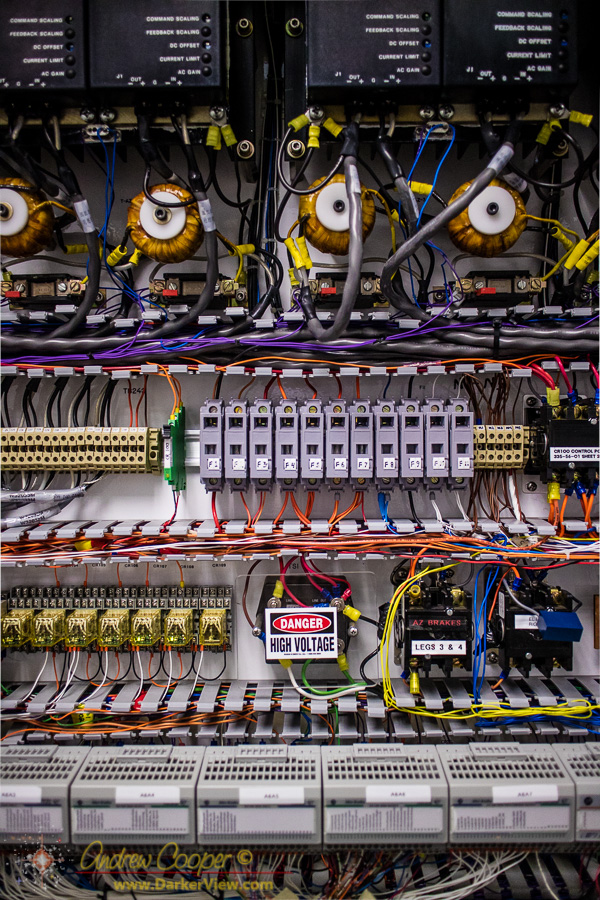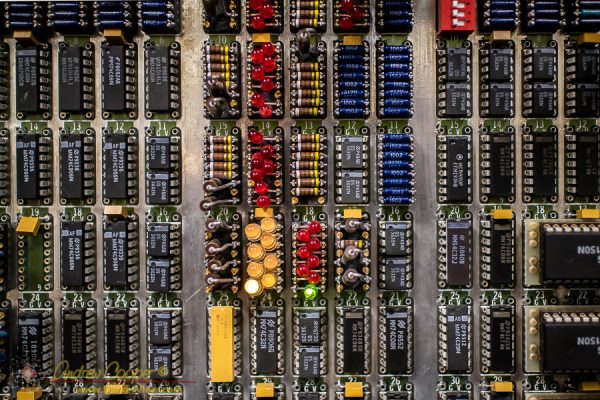
Tag: electronic
Servo Amplifier
Control Logic
The Most Complex of Puzzles
I am currently putting the finishing touches on another printed circuit board.
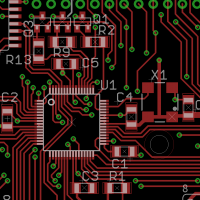
A PCB is laid out with specialized software, drawn on the computer screen. The software can then generate CAM files that are sent to a board house, a manufacturer who can take these files and create a physical PCB. The PCB is thin layers of copper etched to create the patterns of traces laminated onto a fiberglass substrate. When designing the PCB each component, each copper conductor, each trace, is carefully positioned by the designer on the screen, dragging objects colored lines about to create a solution.
Broken, Now Fixed
It is always a good day when I drive up the mountain to a broken telescope, then drive down leaving a working telescope. Easy to say, not always easy to accomplish, the simple statement obscuring a day of struggle to solve the problem and fix it.
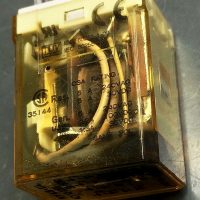
The Keck 2 telescope drive is a complex beast of dozens of relays, miles of cabling, servo amplifiers and power supplies, plus several circuit boards designed and built in the 1980’s holding a bewildering array of arcane logic.
To Build a Clock
As I teenager I taught myself digital electronics. Working from the classic books of the day, mostly the TTL Cookbook, I built a succession of projects. Among these was my first clock. Unlike other projects, this clock was a kit from Jameco Electronics. It actually had a printed circuit board, a wooden case, and a red acrylic face. Not only did I get to solder a real circuit board for the first time, I learned every gate and flip-flop in the circuit. When I finished I knew how it worked.
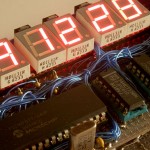
On Monday this week a teenage high school student was arrested and interrogated by police for bringing a digital clock of his own construction to school. Like any young budding engineer Ahmed Mohamed wanted to show off his creation. Unfortunately the closed minds of MacArthur High School in Irvine Texas only saw a Muslim student with a possible bomb. It is clear someone has been watching way too much Fox News.
The most poignant part to me is Ahmed being led out of the school in handcuffs wearing a NASA t-shirt. In those photos I saw myself, a nerd in High School, doing the same things, starting on a road that would eventually lead me to an engineering job on the world’s most powerful telescopes.
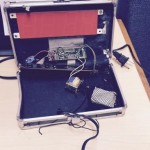
Cool clock, Ahmed. Want to bring it to the White House? We should inspire more kids like you to like science. It’s what makes America great. – Tweet by President Barack Obama
It is gratifying to see that the message of many of these comments is that a young person building an electronic project is something to be celebrated, not feared. We should be encouraging students to experiment, to build, to learn. True engineers start this way, exploring technology for themselves, the experience gained can not be taught in a classroom. In my career I have met and worked closely with dozens of engineers, I can tell which ones were tinkerers and makers before they started college, who build and create for the sheer joy of it.
Ahmed is not sure if he will return to school immediately and the family is consulting with attorneys. Police are currently holding the clock as evidence. Thirty years later I still have my first clock.
A New Hammer
“I suppose it is tempting, if the only tool you have is a hammer, to treat everything as if it were a nail.” – Abraham Maslow
The above statement is an adage that goes a long way to explaining many engineering decisions. Often referred to as Maslow’s Hammer it is a concept that has been well understood in science and technology for a very long time. In engineering we tend to use the tools we know to solve every problem in front of us, even if the tools we have may not be the best solutions.

Or the old tools are simply obsolete and you are forced to update.
I am as guilty as any engineer in this. The major example, at least in my case, are microcontrollers. For many decades I have used Microchip PIC16F controllers each time I encountered a problem that required some form of complex control. Specifically I have always loved the PIC16F73 and the later PIC16F873 parts. they had everything I usually needed… A serial port, plenty of I/O pins, a few channels of 10-bit analog to digital, a convenient 28 pin DIP package. If I needed more I/O or more memory just step up to one of the larger packages like the PIC16F876.
Then Microsoft Windows 7 happened. How is this even related? The old versions of MPLAB I used to write the software and program the parts does not run of 64-bit Windows 7. When I updated my machine, I was forced to update to MPLAB X, a totally different platform. A new hammer to learn.
Adventures on eBay
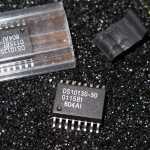
There is some stuff that could have some value. Components and gear that could be sold, for that stuff there is eBay. I have eight listings active right now, and a few more I need to set up. Much of the stuff is electronic components, ICs and DC-DC converters. I am making some money from this stuff, not a lot, a few hundred dollars so far, perhaps enough to buy a few new toys.

